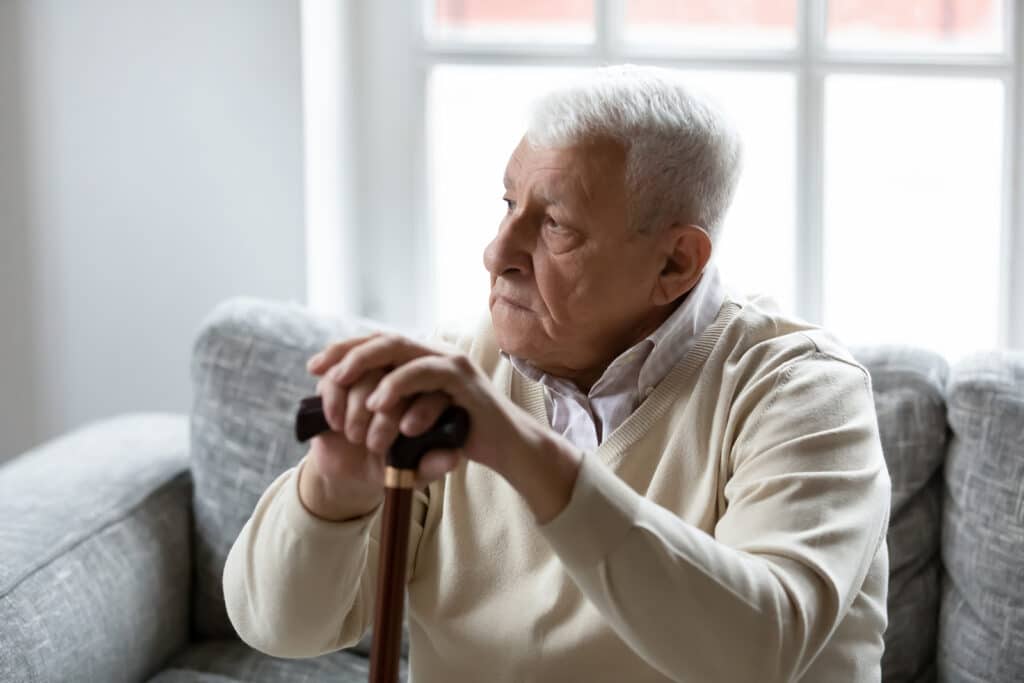You may initially rank loneliness low on the list of concerns as your loved one ages, but the dangers are much more profound than you may think. In fact, what many suspect is simple loneliness is actually social isolation which the AARP Foundation is calling: a growing health epidemic among seniors. Learn more about the dangers of loneliness and social isolation, as well as how you help can reduce the risk for your loved one.
Loneliness and Social Isolation
While the AARP Foundation defines loneliness as the feeling or perception of being alone, social isolation differs in that it is quantifiable by the size of your social network and/or ability to access it. Specifically, senior isolation is being psychologically and/or physically detached from support groups of family, friends, and community- but, is it really that common?
Yes! Social isolation affects nearly 1 in 5 seniors, according to AARP. Once you realize how much time seniors spend alone, you can understand why. The Pew Research Center reports that seniors who live by themselves, on average, spend about ten and a half hours alone each day. They found that more than a third (37%) of those seniors spend all their measured time alone; even those who live with someone- other than a spouse- have an average of seven and a half hours of alone time each day.
The Dangers of Loneliness
Certainly, everyone is lonely at times, but when it extends for a prolonged period and goes beyond feeling alone to having little to no social network (and/or infrequent engagement with the network you do have) can it become a danger to physical and mental health. In general terms, the AARP Foundation equates prolonged social isolation as being as harmful to health as smoking 15 cigarettes a day, and is more harmful than obesity.
But specific dangers of loneliness may include:
- Greater risk for blood pressure
- Greater risk for heart disease
- Greater susceptibility to the flu and other infectious diseases
- Earlier onset of dementia
- Greater risk for anxiety and depression
Signs of Social Isolation
What’s particularly concerning is that one factor driving social isolation is that those experiencing it are reluctant to ask for help. So, it’s important to proactively consider the risk factors. Aside from living alone, which we mentioned above, these factors can also put your loved one more at risk for social isolation:
- Hearing and/or vision loss
- Limited mobility
- Lack of transportation or limited options
- Caregiving for someone with a serious condition
- Having a chronic health condition(s)
- Having psychological or cognitive challenges
- Going through a life transition such as retirement or the loss of a spouse
Other signs that a person might be socially isolated include:
- Deep boredom, general lack of interest, and withdrawal
- Losing interest in personal hygiene
- Poor eating and nutrition
- Significant disrepair, clutter, and hoarding in the home
What to Do About the Dangers of Loneliness
If you’re worried about the dangers of loneliness and/or social isolation for your loved one, there are ways to reduce the risk. First, reassure your loved one that you want to be there for them and that it’s not a burden to ask for help if they’re feeling isolated and/or alone. But be careful to avoid pushing a solution; rather, by asking them questions about what they are experiencing, and their needs and interests, your loved one will be more open to discussing their true feelings.
You might find that there aren’t many opportunities for your loved one to stay socially connected while aging at home. If that’s the case, senior living might be a good fit. Senior living communities like ours offer a range of connection and enrichment opportunities right outside your door with options to fit just about any interest, such as classes, clubs, outings, socials, games, education, entertainment, and even special events. There are plenty of amenities to enjoy too, like beautiful grounds, restaurant-style dining, full-service salon, fitness center, and transportation. Not to mention the peace of mind that caring staff, neighbors and friends are always nearby.
For more information, download our Stay or Go Guide today! Or contact us today to schedule a tour.




